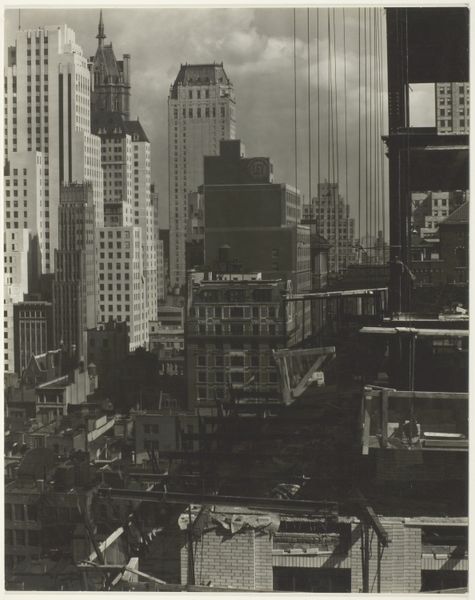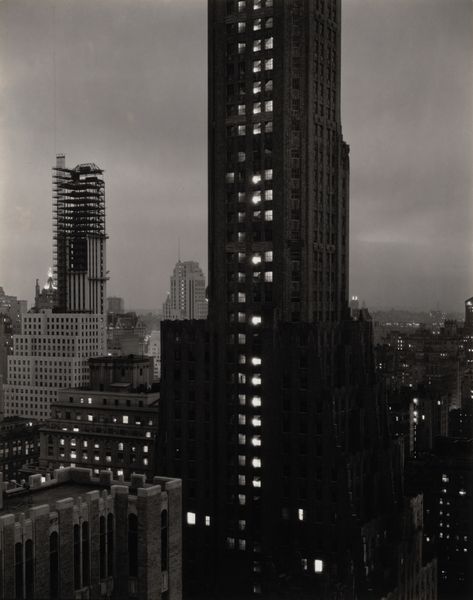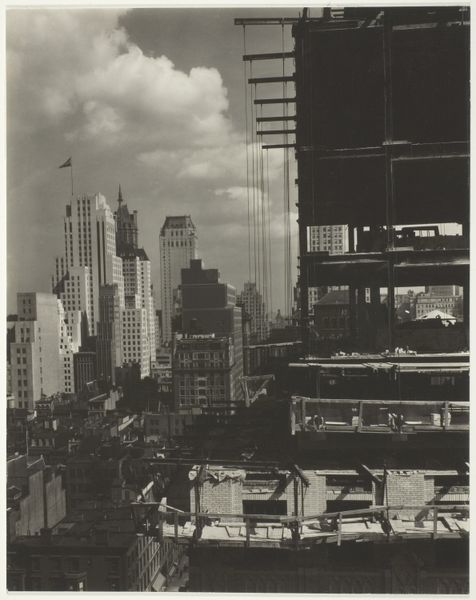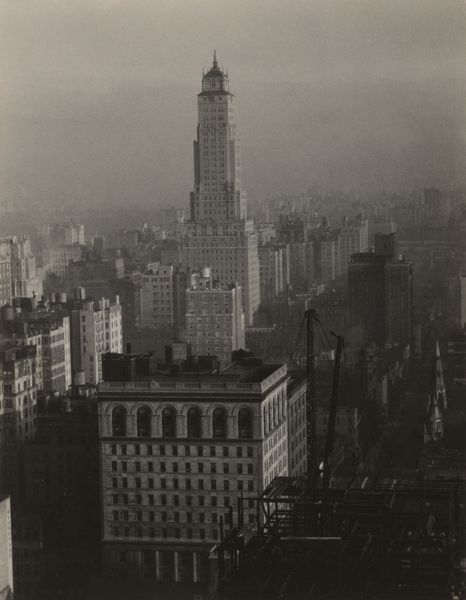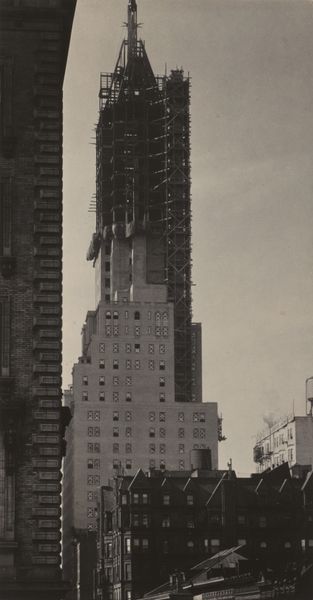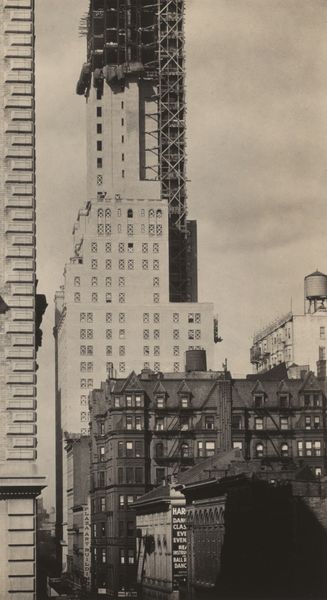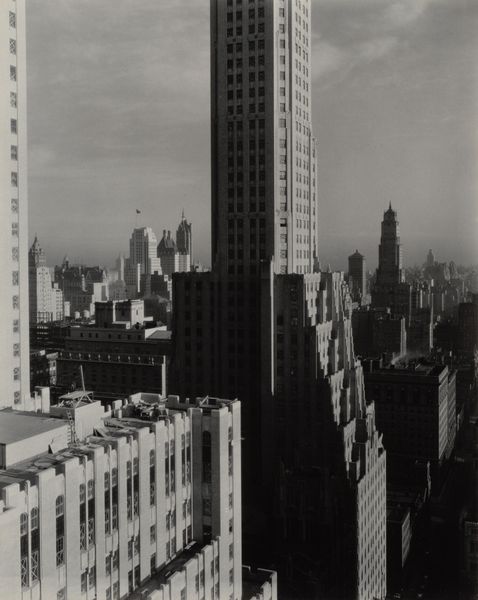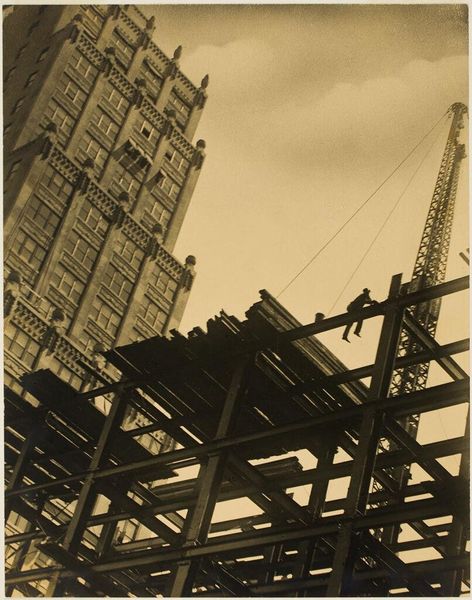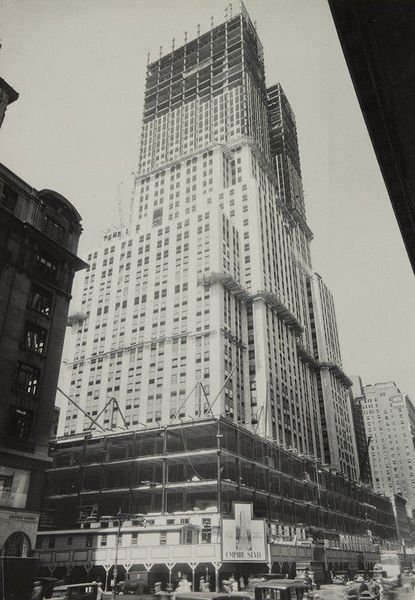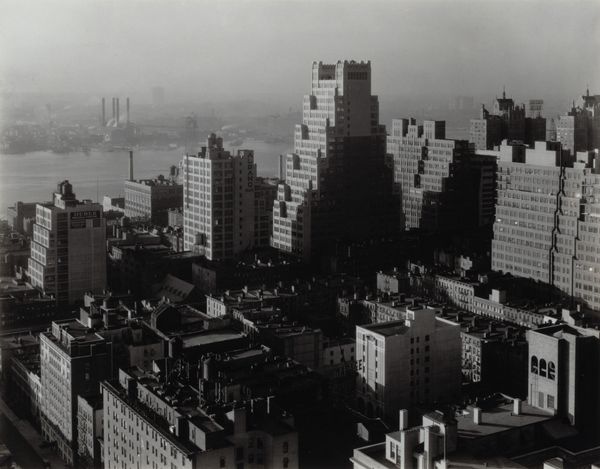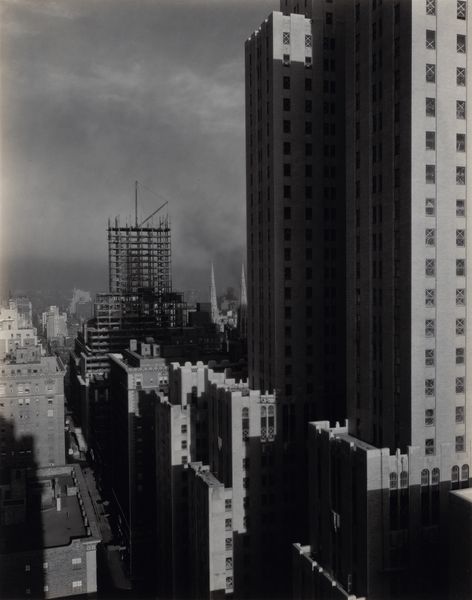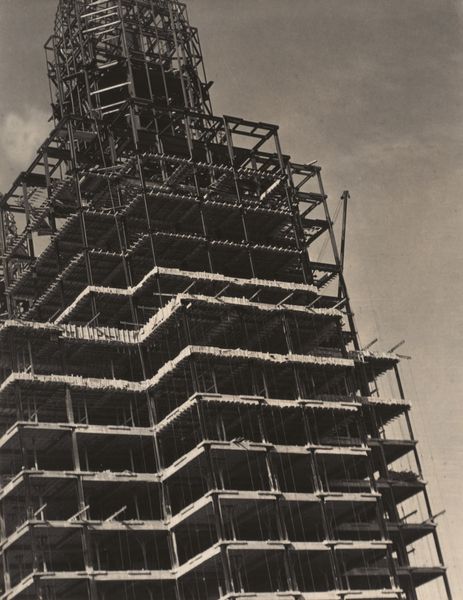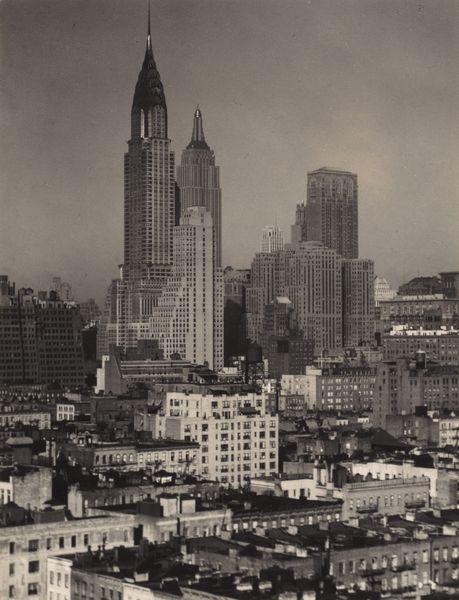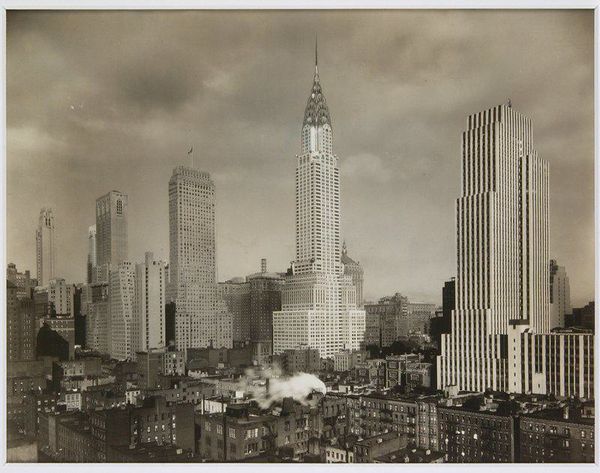
photography
#
black and white photography
#
pictorialism
#
landscape
#
photography
#
geometric
#
constructionism
#
monochrome photography
#
cityscape
#
modernism
#
monochrome
Dimensions: sheet (trimmed to image): 11.6 x 9.2 cm (4 9/16 x 3 5/8 in.) mount: 31.9 x 25.2 cm (12 9/16 x 9 15/16 in.)
Copyright: National Gallery of Art: CC0 1.0
Curator: We're looking at Alfred Stieglitz's photograph "From the Shelton, New York, 30th Floor Looking North," created in 1927. Editor: Immediately, I’m struck by the juxtaposition of this skeletal steel structure dominating the foreground against the soft, almost hazy backdrop of the city. It's very imposing. Curator: Indeed. Stieglitz was deeply involved in modernist circles. Consider the socio-political climate of the roaring twenties, and how images of urban infrastructure reflected the burgeoning dominance of industry, often at the cost of environmental and social equity. This photograph, in particular, emphasizes an unsentimental fascination with the steel bones of these structures. Editor: Visually, this reminds me of religious art showing temples unfinished, under construction. The incompleteness makes you aware of transition and potential; what gods will this new temple house? The city emerging as a character in the American mythos, becoming an object of veneration or critique. It evokes a sense of almost... spiritual transformation. Curator: Fascinating to connect that visual motif of incompleteness to an evolving social narrative! In its time, construction also symbolized progress and modernization, albeit for particular social echelons at the expense of many marginalized groups living through that period. Editor: Yes, but I think there's something enduringly powerful about the symbolism of the grid. In psychological terms, the grid gives a sense of control, and a framework on which to construct ideas. Look at those skeletal steel lattices dominating the landscape; there's also fragility in their precarious assembly. It prompts a psychological reaction beyond mere geometry; more about potential and structure as abstract notions. Curator: Well put. We're looking back nearly a century at an era of rapid change—both literally and figuratively building toward an uncertain future. These geometric shapes are visually and ideologically loaded with both optimistic promise and the hard realities of a rapidly changing America. Editor: Ultimately, these symbolic forms communicate so much about transformation in all senses: psychological, cultural, spiritual… they all are literally structured by these emerging frameworks. Thank you for adding such a pertinent reading regarding those frameworks in 1920’s New York society. Curator: My pleasure! Hopefully, our audience will walk away with much to consider in these layered images.
Comments
No comments
Be the first to comment and join the conversation on the ultimate creative platform.
